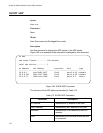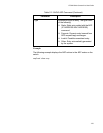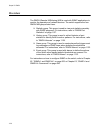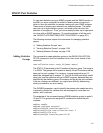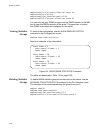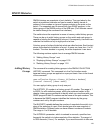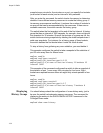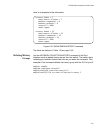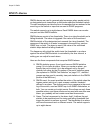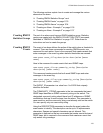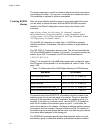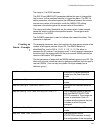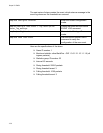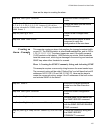Chapter 71: RMON
1130
snapshot every minute for five minutes on a port, you specify five buckets
(one bucket for each minute) and an interval of sixty seconds.
After you enter the command, the switch checks its memory to determine
whether it has sufficient memory resources to create the history group. If
its memory resources are insufficient, it reduces the number of buckets to
an amount that can be accommodated by the resources. If there are no
available resources, the switch cancels the history group.
The switch takes the first snapshot at the end of the first interval. A history
group that has an interval of 1800 seconds, for example, does not take its
first snapshot for 30 minutes. Once all the buckets of a group are full, the
switch continues storing snapshots by deleting the oldest snapshots as it
adds new snapshots. For instance, for a history group of three buckets,
the switch deletes the first bucket when it adds the fourth bucket.
To stop a history from gathering any more statistics, you must delete it.
This example configures the switch to take a snapshot of the statistics of
port 23 once every hour for fifteen hours:
awplus> enable
awplus# configure terminal
awplus(config)# interface port1.0.23
awplus(config-if)# rmon collection history 23 buckets 15
interval
3600
This example of the command configures the switch to take a snapshot of
the statistics of port 7 once every thirty minutes for four hours. Eight
buckets are required because there are eight thirty minute periods in four
hours:
awplus> enable
awplus# configure terminal
awplus(config)# interface port1.0.7
awplus(config-if)# rmon collection history 7 buckets 8
interval
1800
Displaying
History Groups
You should always check the configuration of a new history entry, just to
be sure the switch had adequate memory resources. The command for
displaying the entries is the SHOW RMON HISTORY command in the
Privileged Exec mode:
awplus# show rmon history



